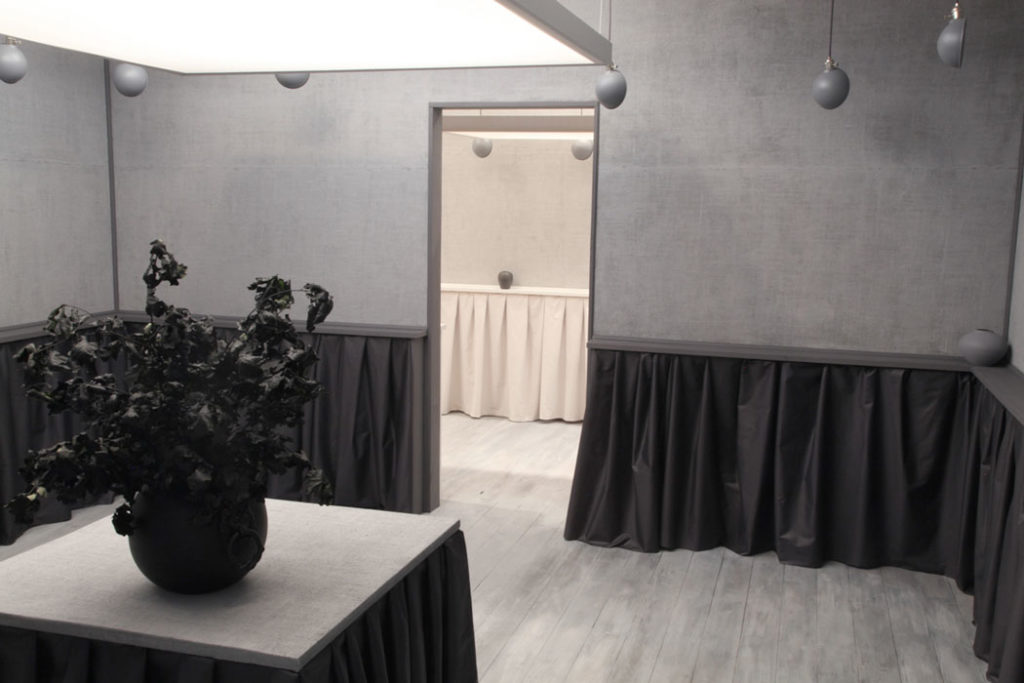1. Kelly Lycan’s “Underglow” at Presentation House Gallery, North Vancouver
The past few years have seen a number of Vancouver-area art galleries on the move. If these galleries are not refugees from escalating rents, they are fundraising to move into purpose-built structures. A reflection of the latter can be found in curatorial programming—in the case of one gallery, an exhibition of imperial artifacts seems designed not so much for visual-art audiences as for the potential donorship of offshore oligarchs, some of whom have had a hand in converting civic landmarks into real estate.
Presentation House Gallery is an exception. Although just past the halfway point in a capital campaign towards a new building (to be named the Polygon Gallery), PHG remains invested in the conversation that is media-based art—not at the expense of new audiences and donors, but in an effort to attract them.
A notable example is Kelly Lycan’s “Underglow,” where the history of the current PHG site inspired an intermezzo work that, in the spirit of institutional critique, reprises the colours, fixtures and architectural details of the gallery’s formative years. In the exhibition space to the west of it lies a full-scale black-and-white recreation of the influential 291 Gallery based on an equally black-and-white photograph that Alfred Stieglitz took of the New York gallery in 1906. In the easternmost space, large digital prints of shadows cast inside New York museums like the Guggenheim and the Museum of Modern Art achieve a trompe l’oeil effect when placed on walls both structural and decorative.
2. Kaja Silverman’s “Unstoppable Development” lecture at the Joan Carlisle-Irving Lecture Series, Vancouver
When art historian Kaja Silverman arrived at Simon Fraser University to teach in 1983 and 1984, post-structuralism was the dominant mode of thought. However, while the literature on this topic often flirts with incomprehensibility, Silverman’s lectures on semiotics were as generous and as lucid as her prose. For this she was honoured with the 1984 SFU Excellence in Teaching Award.
Thirty years later, Silverman returned to Vancouver a legendary figure whose books such as The Acoustic Mirror stand like sentries on the shelves of artists and scholars confident enough to call themselves feminists. Yet while Silverman maintains a presence in feminist discourse, her more recent interests have focused not on the philosophical ruminations of Sigmund Freud, Ferdinand de Saussure and Jacques Lacan, but on an alternative history of photography.
In reading from the second chapter of her upcoming book, Unstoppable Development, Silverman delivered a lecture that was less an introduction to the book’s propositional content than a series of lyrical descriptions in support of her assertions: that the world has always known photography—even before its invention. Was I the only one in the audience who looked at my notes the following day and thought I had written a poem?
3. Joar Nango’s “The same condition repeated at every moment of the walk” at Western Front, Vancouver
If there was an art event this year that did not precede itself, that took me by surprise, it was Joar Nango’s solo show at the Western Front. Nango, who is based in Norway and is of Sámi descent, presented sculptural works, pictures, projections and texts that evoked the legendary self-sufficiency of the circumpolar Sámi and the DIY practicality of today’s urban youth.
Convergences such as Nango’s are not new to audiences familiar with Brian Jungen’s Bush Capsule (2000) or what lies inside the oft-travelled Beat Nation (2008) group exhibition, but Nango’s abstractions are looser, more expressive—closer to what goes on in the barnyard or the skatepark than the gallery or the museum. If there is something recognizably “contemporary” about his work, it is found not at the outline of his objects but, à la Geoffrey Farmer, Gareth Moore and Kara Uzelman, at those points where his materials combine, hold together.
Greeting us at the opening was the artist himself, who stood by the gallery door serving complimentary bowls of soup he had made from a family recipe (substituting elk, he told us, for reindeer). And while true that my first inclination upon entering the installation was that I had been drugged by this dish, it was the space between objects—under a cool, arctic-blue lighting regime—that possessed me.









